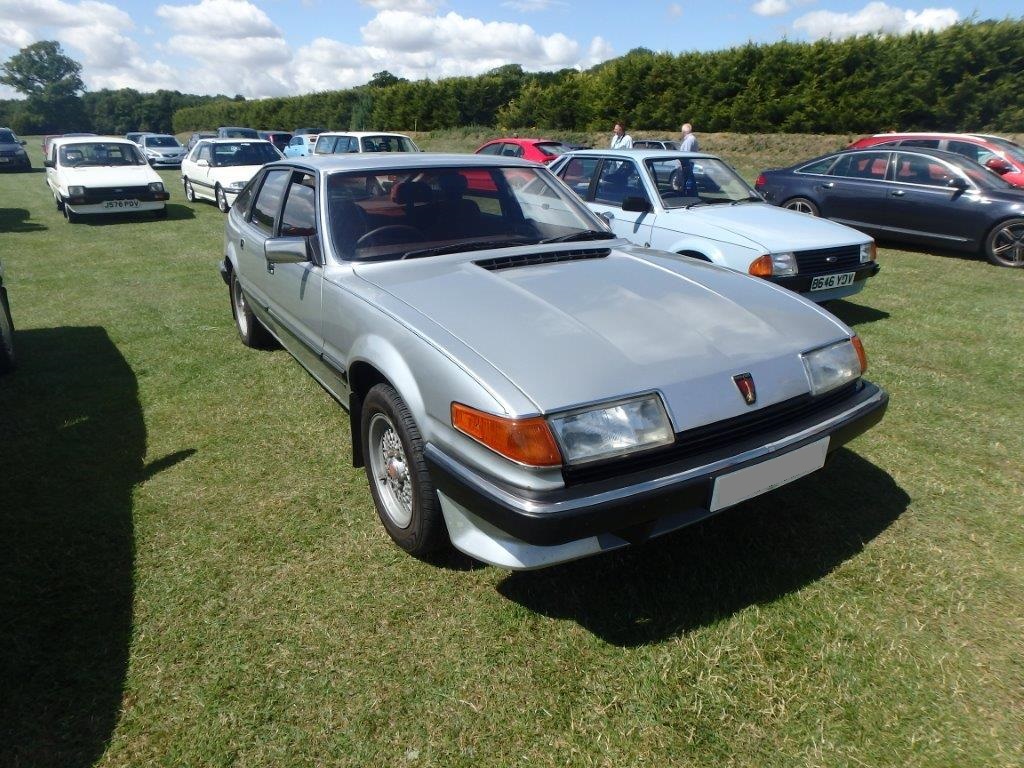-
Insurance
InsuranceAbout our productsLearn about insuringGet a quote Get current values, historical values, model history and more.
-
Valuation
ValuationHagerty valuation toolLook up a vehicle value Get current values, historical values, model history and more.
-
Events
EventsHagerty official eventsHagerty ClubhouseEvent calendar
-
Entertainment
EntertainmentMore to explore
- Portal login
1980 Rover SD1
2600 Vanden Plas Hatchback 2.6 L
Vehicle values by condition
Fair
Condition 4
£2,200
#4 cars are daily drivers, with flaws visible to the naked eye. The chrome might have pitting or scratches, the windshield might be chipped.
Good
Condition 3
£5,100
#3 cars could possess some, but not all of the issues of a #4 car, but they will be balanced by other factors such as a fresh paint job or a new, correct interior.
Excellent
Condition 2
£6,900
#2 cars could win a local or regional show. They can be former #1 cars that have been driven or have aged. Seasoned observers will have to look closely for flaws.
Concours
Condition 1
£11,400
#1 vehicles are the best in the world. The visual image is of the best car, unmodified, in the right colours, driving onto the lawn at the finest concours.
Insurance premium for a
1980 Rover SD1 2600 Vanden Plas Hatchback 2597
valued at £5,100
£128.69
/ year*
History of the 1980 - 1986 Rover SD1

1980 - 1986 Rover SD1
The Rover SD1 was in production from 1976 until 1986, with late cars registered into 1987. Styled in-house by David Bache, it is a front-engine, rear-wheel-drive executive car seating five people with a large hatchback boot – one of the first cars of its type in its class.
The Rover SD1 was seen as a technically retrograde step at launch. While its predecessor, the P6, had independent rear suspension, the SD1 had a live axle. Up front, MacPhersons replaced double wishbones and cantilevered coils. But its hatchback body and state of the art interior were all-new. Launched as a 3.5-litre V-8, 2.3 and 2.6-litre sixes joined the range in 1977. 1979 saw the launch of a new range-topping V8-S model, with upgraded trim, new colours, and gold alloy wheels as standard.
In 1980 the range gained new mirrors as part of a minor facelift. The V8-S was replaced with a Vanden Plas-badged car, with leather trim and headlamp washers as standard.
1982 saw a more comprehensive facelift, with revised trim, a deeper rear window, new bumpers and a small grille beneath new flush fitting headlamps. New models included the 2000, 2400SD Turbo, and the range-topping Rover SD1 Vitesse. This used a 190 bhp fuel-injected V-8 with revised suspension and a boot spoiler. By 1984 Rover had twinned Vanden Plas trim with the Vitesse engine to make the rare and desirable Vanden Plas EFI.
In 1986, Rover SD1 production largely ceased, replaced by the Rover 800. Production of the Vitesse, 2600VP and 2300 continued into 1987, when 2600 and Vitesse models wre stockpiled by the Metropolitan police for continued use.
Rover SD1s drive beautifully, with pleasantly light steering (Unless a low spec car without power steering), nice gearboxes, and a sharp turn-in. Our favourite to drive is the eager 2600, though grunty V-8s offer far more accessible thrills. Barring the engines, pretty much everything in interchangeable across the range – the V-8s are shared with Range Rovers, and the 2.0 with the humble Austin Montego. Engines are easy to maintain, and courtesy of specialists there are many remanufactured or new old stock parts available to help you care for your Rover.
For rust, check the leading edge of the bonnet and under the bumper for stone chip damage. Sunroof apertures and sunroof panels rot too, as well as the usual suspects of sills and door bottoms. The seal between body and sill can crack, allowing moisture in to do its dirty business. Under the rear bumper is often missed but is a favourite for rust – and wheelarches can rot for fun if left neglected. We’d check around the rear window too, as rust here can allow water into the boot. Interior trim is rare, so make sure it has good trim. Electrics can suffer as a result of water ingress – as can carpets.
Most desirable are the V-8 models – with early Series 1s and EFI cars being more desirable than Series 2 carburettor cars. Six- and four-cylinder cars are worth considerably less, despite the 2600 being very nearly as good as the V-8.
Least desirable are the 2000 and 2300 models, though the 2400SD diesel is prized by those who can find them. Many four- and six-cylinder Rover SD1s have been modified using Range Rover V-8s, a practice which is ongoing to this day.
The Rover 800 fastback is a similarly sized large hatchback from Rover, though it lacks rear-wheel drive and the V-8 – for those the P6 saloon comes closest. Alternatives from other manufacturers include the Renault 30, the Audi 100 Avant and the Ford Granada MK3.
All 1980 Rover SD1 body types
| Year | Make | Model | Submodel | Body Type | Engine size | Average value |
|---|---|---|---|---|---|---|
| 1977 | Rover | SD1 | 2300 | Hatchback | 2.4 L | £ 2,000 4,800 6,700 10,600 |
| 1977 | Rover | SD1 | 2600 | Hatchback | 2.6 L | £ 2,200 5,100 6,900 11,000 |
| 1980 | Rover | SD1 | 2600 Vanden Plas | Hatchback | 2.6 L | £ 2,200 5,100 6,900 11,400 |
| 1976 | Rover | SD1 | 3500 | Hatchback | 3.5 L | £ 2,300 5,200 7,500 12,100 |
| 1980 | Rover | SD1 | 3500 Vanden Plas | Hatchback | 3.5 L | £ 2,500 5,500 8,700 14,100 |
Hagerty Newsletter
Get your weekly dose of car news from Hagerty UK in your inbox

ADVERTISEMENT